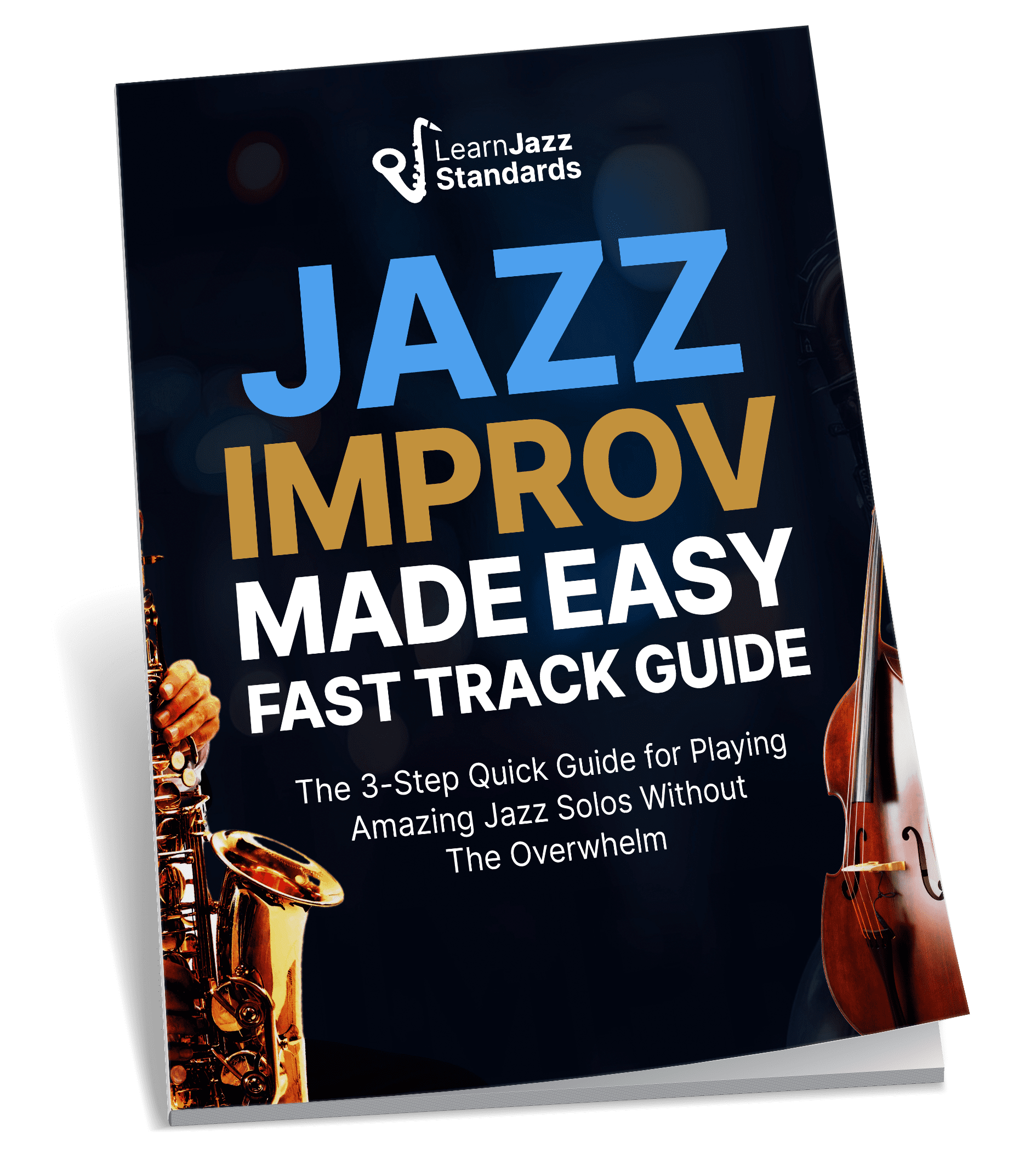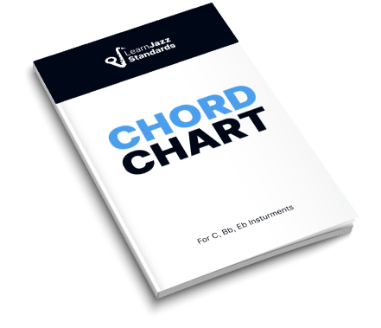Everybody wants to improve their jazz solos.
For many musicians, soloing is one of the main elements that attracted them to jazz in the first place. That’s why so many of our readers and podcast listeners are always asking how to become better soloists. We even have an entire page dedicated to playing better jazz solos.
Jazz improvisation is not easy! Jazz standards are full of harmonic complexities, and it demands a certain level of virtuosity to become a great improviser.
If you want to become a great jazz improviser, you need to spend time practicing. Lots of time practicing. Hopefully, this is as good of news for you as it is for me; because that means we get to spend lots of time playing our instruments!
But what if we spend all of that time practicing, and feel like we aren’t getting results?
Unfortunately, many musicians waste a lot of time in the practice room. It could be they are practicing poorly, or they just aren’t practicing the right things. It could also be that they are practicing bad habits, over and over again.
I don’t want you to waste your precious time. Here are 3 simple steps you can take today to improve your jazz solos.
1. Steal what you like.
Don’t be alarmed! In jazz terms, stealing is almost always a good thing. If you want to become a great jazz improviser, it’s important that you mimic the jazz greats that came before you.
One of the best practices you can do is take bits and pieces of musical information you like from a jazz musician you admire. It could be a short lick over a chord progression like a ii-V-I, or even an entire solo.
For example here’s a lick I “stole” from Dexter Gordon:
You don’t need to write out the musical information you learn. The most important thing is to learn it by ear. This is hands down one of the best ways to learn jazz vocabulary and start drastically improving you jazz solos. It just me who thinks this, though! This is the advice of many pro jazz musicians and educators out there.
Practice Challenge:
- Make a list of your favorite jazz musicians you like listening to.
- Pick one of them, and identify a solo you really like.
- Find a musical idea that stands out to you and learn it by ear.
- Extra challenge: Learn the lick in all 12 keys to really get it down.
2. Leave space.
A common mistake among novice improvisers is playing too much. This can make all the difference between a great jazz improviser and a mediocre one. You need to start thinking about your phrasing. Take it from Miles Davis:
“It’s not the notes you play, it’s the notes you don’t play.” -Miles Davis
Whenever you take a solo, think about having a conversation with someone. You need to stop to take breaths. You need to allow the person you are talking with to interject something. If you crowd the conversation with run-on sentences, it gets tiring and confusing!
Start thinking about space and phrasing in your solos. If you are starting and ending great musical ideas and connecting them, your solos will drastically improve.
Practice Challenge:
- Pick a jazz standard you know well and are comfortable playing.
- Turn on a metronome, a play-along, or find a buddy to practice with.
- Play a musical phrase for two bars and then rest for one bar. Do this throughout the entire song form.
- Create different variations of this (3 bars 2 bars…etc). This is not necessarily how you would play organically, but it helps exercise your phrasing and restraint.
3. Practice at different tempos.
This may sound simple, but it’s crucial. If you play a jazz standard at a medium speed and feel comfortable with it, that’s great. But try playing it at an up tempo, and it becomes an entirely different animal. You have to rethink how you approach your improvisation. You can’t just play the way you normally do.
Try playing at an extra slow tempo, and again, the song will feel completely different. You may feel tempted to rush or fill in more space. It’s all about rhythm and subdivision. These are things that are often ignored by novice improvisers, but having a firm control over them makes a difference.
It’s time to get out that metronome of yours and put it to use.
Practice Challenge:
- Pick a jazz standard you are comfortable with and know well.
- Start improvising over it at a tempo you feel comfortable in. For most, this is a medium tempo. Have your metronome set to beats 2 and 4. Play through as many choruses as it takes until you feel comfortable at that tempo.
- Slowly increase the speed in intervals, taking as much time as you need. Stop when you reach your “breaking point”, which is when you feel like you can’t go any further without flying off the rails.
- Now go back to that original tempo and repeat the same process, this time going slower in tempo. Stop at the point where the tempo becomes to slow for you to play with accuracy.
This is an incredible practice to help your time feel and phrasing!
Take these simple steps to better your jazz improvisation. I guarantee if you put these things to practice you will start seeing some serious results in your jazz playing. Don’t take my word for it, go and see for yourself!











